Mutual Insurance Building
4750 N Sheridan Road, Chicago IL
Moving image works by Mark Alcazar Diaz, Kayla Anderson, Norman W. Long, Regina Martinez, Zachary Nicol, Josh Rios, and others (forthcoming). Please set an appointment to visit our media room, or view the works online below.
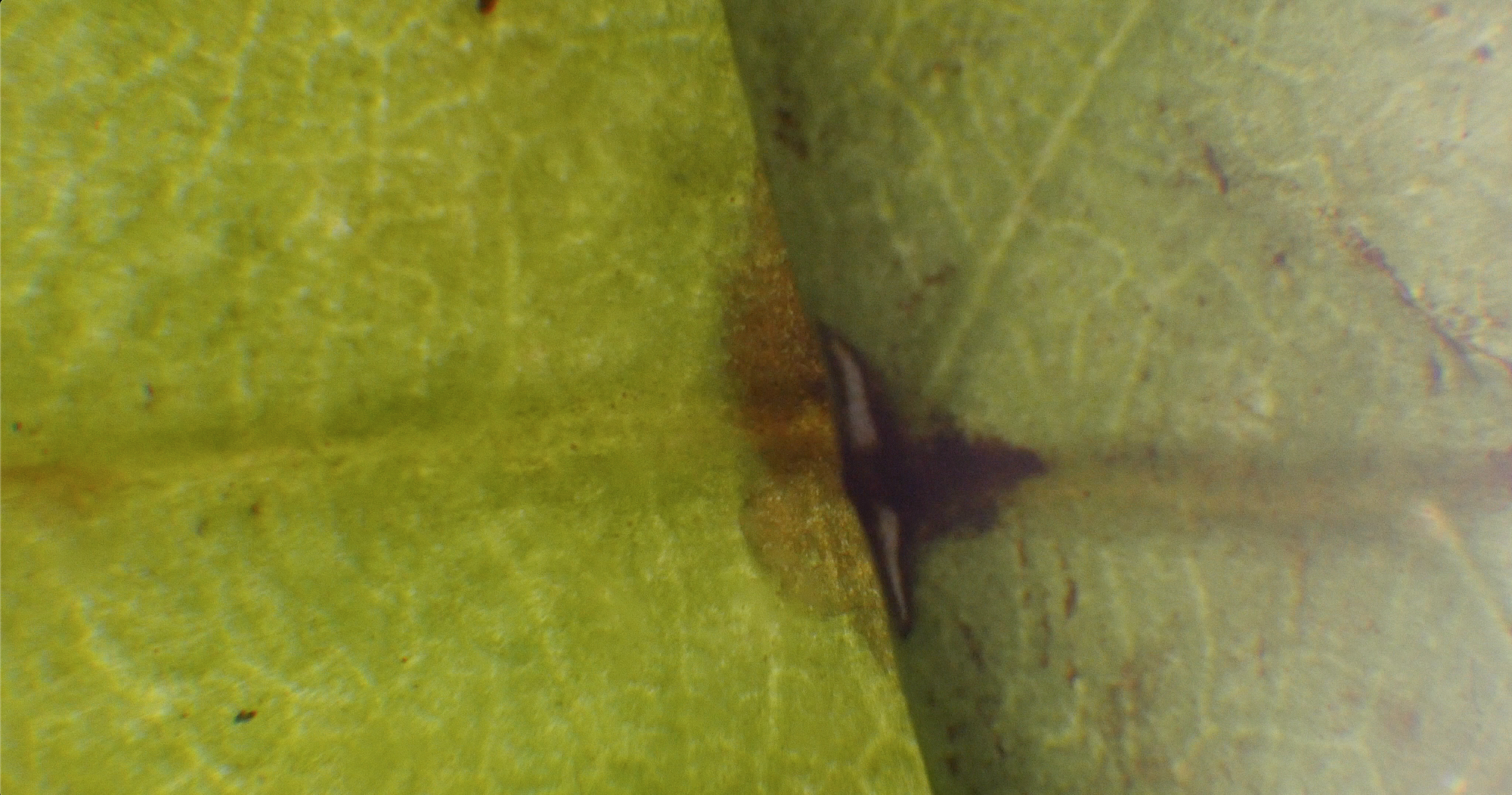
Kayla Anderson
Pilea Pepermioides (Precarity Fetishes and Aspirational Beings)
Video, color, stereo
10 minutes 36 seconds
2018
A video about a house plant, the police-state, and a protagonist whose desire to build a contained world for herself must inevitably be shattered. An experiment in world-building, each scene uses a different image-making tool: line animation, video, 3D modeling, and video game construction. The narrative employs different vantage points for talking about the world through a single plant, known for its ability to be propagated and shared. Voice: Sara Sukhun.
Kayla Anderson participates in the art world as an artist, a critical writer, a sometimes-curator, a precarious administrator, and a roaming educator. Their work often investigates the ways that culture and subjectivity shape, and are shaped by, technology. Growing up in San Antonio, Texas, where capitalism and disenfranchisement are more relentless than the sun, they value art as an arena for non-strategic modes of thinking, feeling, and communing with others.
For more information and work, please visit kayla-anderson.com. Also recommended: Stay With The Body.

Norman W. Long
vanvlissingen (afterburn)
Video, color, stereo
6 minutes 43 seconds
2017
This work is a part of Van Vlissingen Prairie (video album), which was a single channel video installation with projection and speaker placements featuring the sound ecology of Van Vlissingen Prairie within the South Deering community area on the South-Side of Chicago. South Deering is majority African-American and Latinx. Home to the Joseph H. Brown Iron and Steel Company in 1875 (to be known later as Wisconsin Steel). South Deering was a major industrial hub attracting Irish, Welsh, and English workers at first, followed by Swedes and Germans. After 1900, new settlers arrived from Eastern and Southern Europe. African Americans and Mexicans came following the civil-rights laws banning discrimination in housing and employment. When the mills began shutting down, the community fell into a deep economic depression with many families relocating to other states.
It was my response to a LOUDSPKR/Volume artist call for sounds of the recession in 2009 that started my interest in recording my neighborhood (South Deering/Jeffery Manor). The question of what is the sound of recession haunted me for a couple of days. Especially since I am one of many African Americans who had been hardest hit by this recession and lives on the South-Side of Chicago, which is predominately African American. The recording of my neighbors setting off firecrackers, roman candles, etc. in the rain is a response to the economic silencing a recession does to a community. I see/hear the fireworks as a celebration of existence more than a celebration of freedom, liberty and or patriotism.
My interest in Van Vlissingen Prairie or the Marian R. Byrnes Natural Area stemmed from a screening of a short documentary I saw while attending graduate school at Cornell University. This particular documentary was about Byrnes’ successful attempt to preserve local prairie land from being built on by the Chicago Transit Authority. The City of Chicago does plan on restoring the prairie and installing trails in the future.
My interest lies in the progression of the ecological restoration and maintenance of this space. My expectation, as the site is restored via soil remediation, walking paths created, removal of invasive plant species, and introduction of native species the soundscape will also change incrementally. There has been a controlled burn recently. Shortly after the burn I made audio recordings from contact microphones placed within the scorched earth. This is one of the examples of field recordings I have made for this video album. In some pieces I mixed field recordings with analog synthesizers weaving in and out of the post industrial noise coming from the adjacent rail yard, local residences and the local ecology of birds and singing insects. This soundtrack questions the notion of what a Black Community sounds like and what a community is. These videos challenge notions of landscape by bypassing the pictorial and the beautiful, defining landscape as a complex matrix of networks and systems. Some videos are glitched referring to the less than ideal landscapes and soundscape conditions and the layering and slippage of time. By challenging the traditional way of documenting and defining landscape we begin to listen to how soundscapes define our communities and who we are.
–– Norman W. Long
Norman W. Long's practice is informed by a diverse array of disciplines, including walking, listening, teaching, improvisation, performance, recording, and composition. This approach aims to engender dialogues with audiences on memory, place, ecology, race, culture, value, silence, and the imperceptible. Long's work is deeply influenced by the interdisciplinary practices and ideologies of 1970s artists, musicians, critics, and designers, particularly drawing from Rosalind Krauss' seminal article "Sculpture in the Expanded Field" and the theoretical framework of acoustic ecology developed by R. Murray Schafer.
The sonic landscapes in Long's oeuvre find inspiration in Black music genres such as house and techno, 'free jazz,' Great Black Music, Herbie Hancock's Mwandishi, Pauline Oliveros, King Tubby, Dub, as well as the experimental sounds of artists operating between and outside traditional genre boundaries. Long's strategies for improvisation and composition are informed by Samuel R. Delany's palimpsest text "Plague Journal" from the novel "Dhalgren" (Science Fiction) and "Atlantis: Three Tales" (Fiction), along with Mark Bradford's artistic process as observed in his 2011 survey at the Museum of Contemporary Art: Chicago, which emphasizes collecting, collaging, scraping, and pasting materials sourced from his community in Los Angeles.
Long earned an MFA from the San Francisco Art Institute in New Genres (2001) and a master's in Landscape Architecture from Cornell University (2008). His artistic practice has been showcased at various prestigious venues including Columbia College's Glass Curtain Gallery, Experimental Sound Studio, Kavi Gupta Gallery, Yale University's Center for Collaborative Arts & Media, The Renaissance Society, the 2022 High Zero Festival in Baltimore, MD, the Chicago Humanities Festival, the Chicago Cultural Center, and the 2021 Chicago Architecture Biennial. He has participated in residencies at EMS in Stockholm, Djerassi Foundation and Yucca Valley Material Lab in California, and AS220 in Providence, RI.
Long has been the recipient of a ThreeWalls RaDLab fellowship and commission for his works "Neighborhood Listening Garden" and "Re-Membering/Re-Presencing." He has performed and toured with Angel Bat Dawid and the Brothahood, and collaborated with a diverse range of artists including the Ali/Harris/Long/McKenna group, Spectralina, Todd Carter, John Daniel, Xris Espinoza, Carol Genetti, Damon Locks, Tatsuya Nakatani, Joe Namy, Cristal Sabbagh, and Sara Zalek. His compositions have been released on various labels, including Hausu Mountain, Reserve Matinee, LINE, Rural Situationism, and Room40, with his latest solo release, "Calumet in Dub," available on Blorpus Editions.
For more information and work, please visit normanwlong.bandcamp.com and normanwlong.wixsite.com.
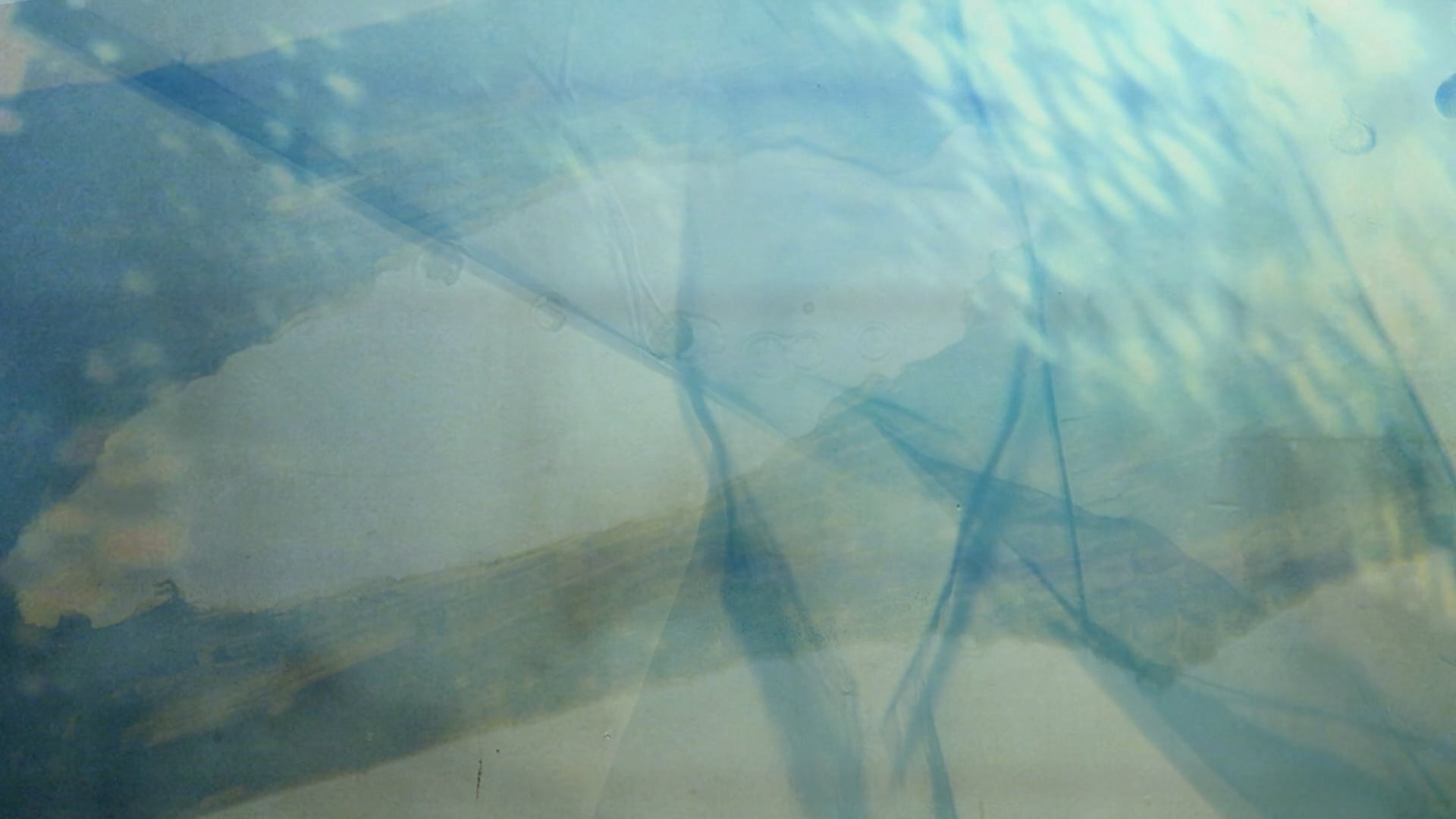
Regina Martinez
sonogram for a ghost
HD video, color, stereo
8 minutes 36 seconds
2021
“Want to hear a song I made?” My mom called to share a tune in her head for days. She seemed pleased with her ears’ ability to find the notes on a small keyboard my brother had gifted her. Something to do during the pandemic. A perfectionist to her core, I have never known my mother to enjoy herself creatively. And in these simple notes, I hear her laugh and longing, her curiosity and pride. Sometimes we lose sight of each other. We do not always understand each other. May be sound is the feeling below the words.
–– Regina Martinez
Regina Martinez, also remembered as selective listening, experiences sound as records of our connections and departures. Her current experiments draw from an archive of infinitely personal recordings she relates to as soundmarks: her father's hands cleaning dried beans, drumline rehearsal after school, the flap of our clothes outside on the line, the creak of a gate to home. Each captured moment becomes its own instrument, its own layer of composition, and a washing and wringing out of memory meant to be overheard like a poem again and again. Her practice evolves through commissioned installations, dj sets, live performance and sound design for experimental film. Regina grew up in Saint Louis, Missouri where she was artistic director of the Pink House neighborhood art space for creative exchange with children and their families. She is co-creator of “the clothesline” monthly one-night audio-visual installation in St. Louis. More recently she was program manager for Threewalls in Chicago, and received an MA in Sound Arts & Industries from Northwestern University.
For more information and work, please visit selectivelistening.site.
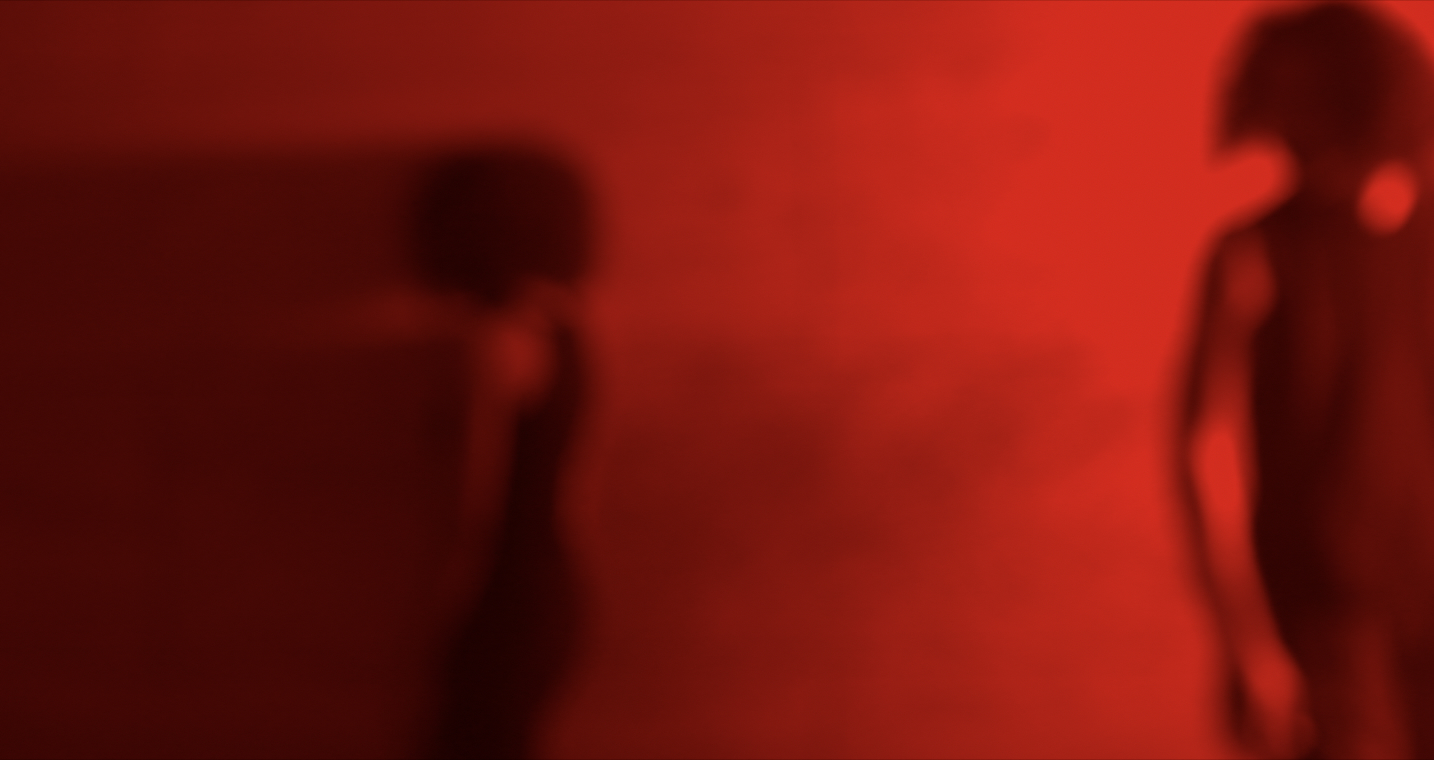
Zachary Nicol
Afterimage
Video, color, stereo
10 minutes 33 seconds
2022
A choreography of camera, light, body, and editing techniques creates a dark, blurred, and saturated space at the edge of visibility to explore themes of capture and the violence of exposure inherent to the “frame." What forms and affects linger in blackness after the appearance and disappearance of light, image, and color?
Zachary Nicol is an artist and performer based in Chicago. Their performance and video work uses research in dance, movement, site, and image to unfold problems of representation and the performing body. Their work has been presented in Chicago at Blanc Gallery, Links Hall, Pivot Arts Festival, Trap Door Theatre, Co-Prosperity, Lumpen Radio, filmfront, OuterSpace, Compound Yellow, Krannert Center for Performing Arts (Urbana, IL), the National Museum of Romanian Literature (Bucharest), and S1 Gallery (Portland, OR). Nicol was a 2023 Chicago Dancemakers Forum Lab Artist, has been artist in residence with Ragdale Foundation, Annas Projects, ACRE, and Links Hall, and has received support from Villa Albertine and Chicago Artists Coalition. Nicol has performed and contributed to dance, film, and performance projects by artists including Anna Martine Whitehead, Courtney Mackedanz, Gabriel Chalfin-Piney, Adam Linder, Joe Namy, Mlondi Zondi, Alexandra Pirici, Kim Brandt, Ginger Krebs, Catherine Sullivan, and others.
For more information and work, please visit zacharynicol.info.
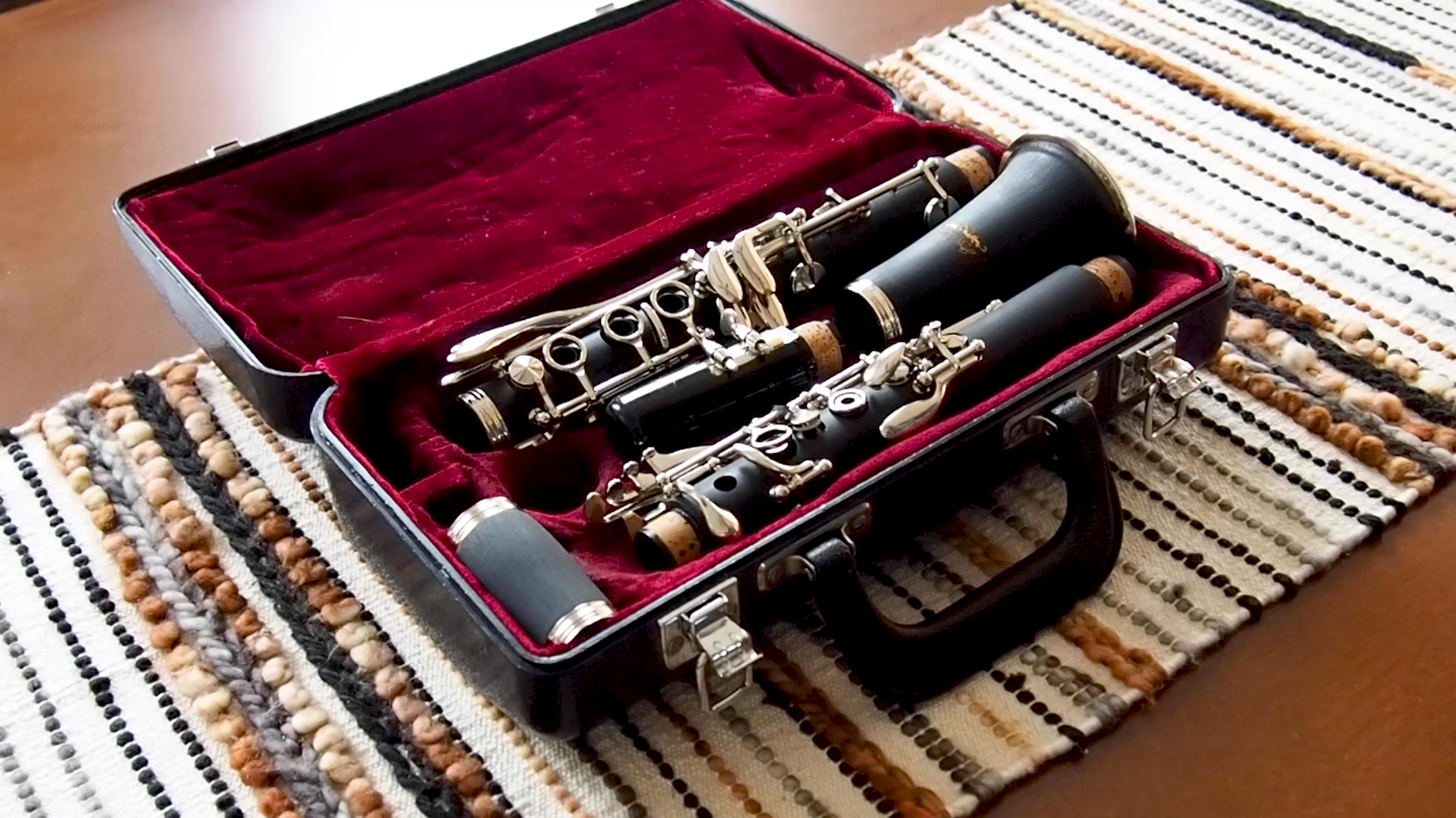
Josh Rios
Other Instrumental Subjects (A Script in Stanzas)
Video, color, stereo
11 minutes 15 seconds
2020
Other Instrumental Subjects (A Script in Stanzas) was originally published for Quarantine Times, an expanded web-based project that provided support to artists by commissioning new works daily from March through June during the Coronavirus Pandemic of 2020. The video essay shot from a second story apartment window in Logan Square documents the early phases of the lock down by focusing on the limited movement of people, contemplating the transhistorical linkages between Foucault’s biopolitics and Chicago’s stay at home orders.
–– Josh Rios
Josh Rios is a founding member of Sonic Insurgency Research Group (SIRG) and faculty at the School of the Art Institute of Chicago where he teaches courses in social theory and research-based practice. As a media artist, writer, and educator his projects deal with the histories, presents, and futurities of Latinx and Chicanx subjects and transnational resistance to globalization and neocolonialism. Recent projects have been featured at the Institute of Contemporary Art (Portland), Locust Projects (Miami), and the Vincent Price Art Museum (Los Angeles). In 2021, Rios was a cohort member of the year-long residency program, Re:place, sponsored by Co-prosperity (Chicago). Recent publications include “What is Justice to the Dead? On Sabra Moore’s Reconstruction Project” in the exhibition catalog for Art for the Future: Artist Call and Central American Solidarities and “Sonic Legal Spaces: An Essay of Overdubs” in the journal openwork for Columbia University’s Academic Commons. Other projects include a series of ongoing conversations and autonomous study groups on sound and power sponsored by MARCH International: A Journal of Art and Strategy. Forthcoming publications include, “Mythic Sonic Beings in Social Space: An Experimental Symposium,” for the book, Situated Listening: Attending to the Unheard (Routledge, 2024).
For more on the work of Rios and SIRG, please visit s-i-r-g.net. Also recommended: The Wide-Ranging Importance of the First Nations Garden.
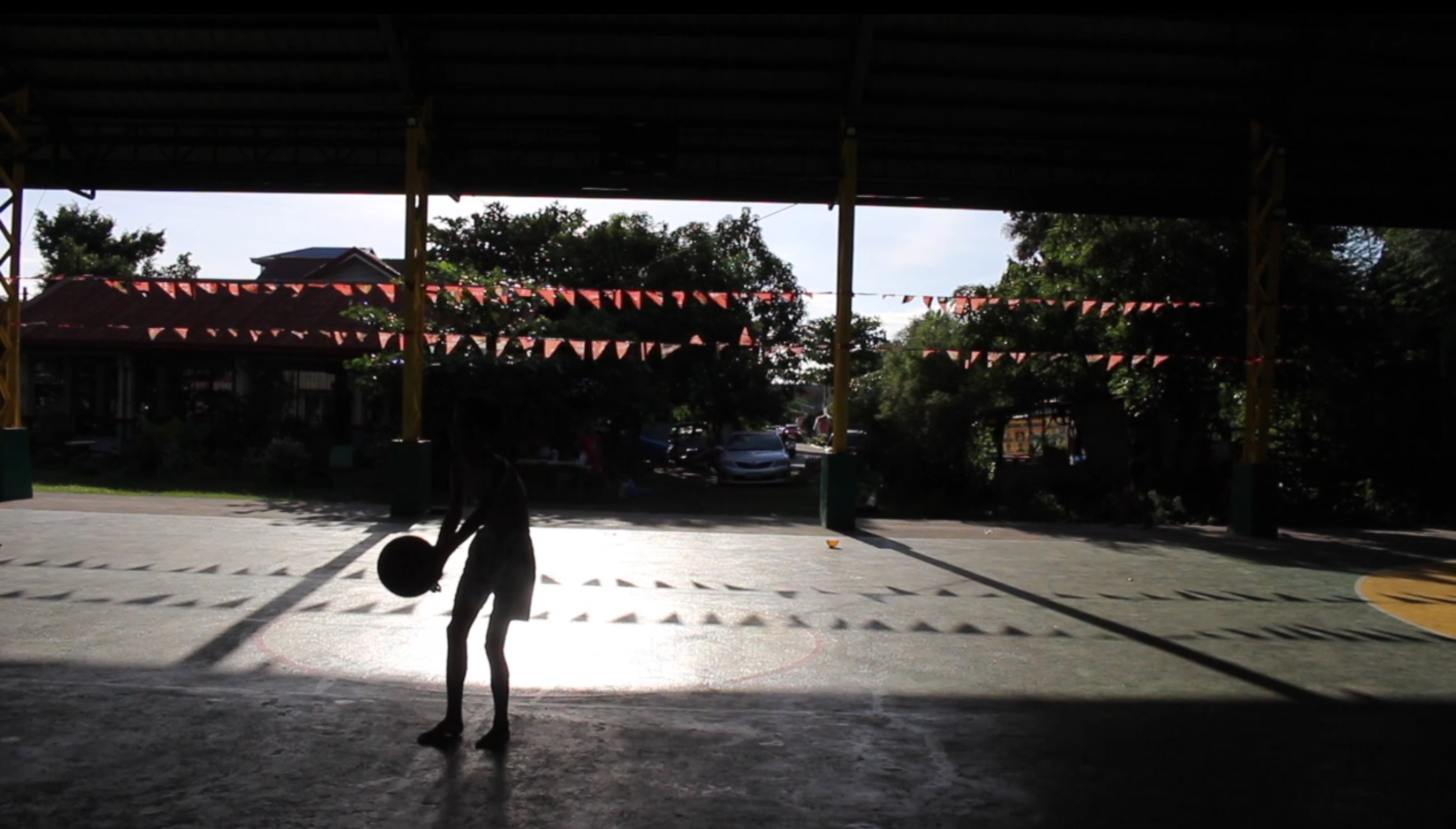
Mark Alcazar Diaz
Silt
Video, color, stereo
91 minutes
2024
This video documents basketball courts scattered throughout the diverse landscapes of the Philippines. The courts depicted in the documentary serve as more than just playing grounds for the game itself; they are versatile and adaptive spaces for other sports activities and communal gatherings. The video also bears witness to the ravages of time and natural disasters. While some courts gleam with fresh paint, others bear the scars of years of use and the battering of nature's fury.
Mark Alcazar Diaz is an artist, curator, educator, and arts administrator. He works with various media, including video, drawing, and object making, to examine migration, memory of place, and natureculture. Related to his interest in exploring the pedagogy of sites and objects, Diaz facilitates workshops for teachers, artists, and non-artists to collaborate and explore the intersection of making and learning. He received a Master of Fine Arts from the University of Illinois Chicago.
For more information and work, please visit markalcazardiaz.com. Also recommended: Seam.